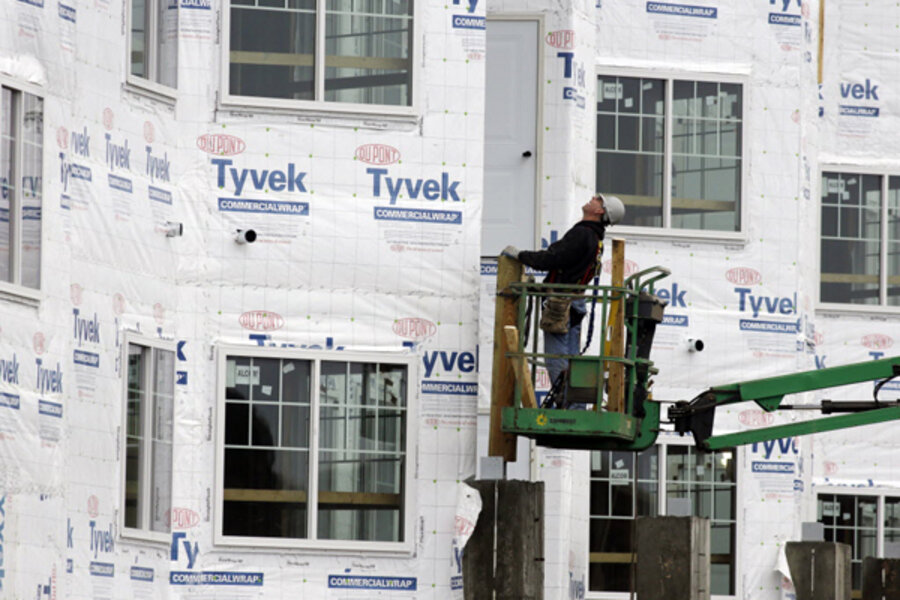Fewer boarded-up homes: Vacancy rate for US housing falls to pre-bust levels
Loading...
Across America fewer homes are boarded up. And fewer people are “doubled up,” sharing a tight apartment with friends or parents.
According to the Census Bureau, vacancy rates for residential housing in the United States have fallen to levels last seen before the peak of the housing boom in 2006 and the subsequent recession.
In the final quarter of 2012, the vacancy rate was 1.9 percent of homeowner housing, and 8.7 percent of the rental housing market. That’s down from rates as high as 2.9 percent (2008) in the owner market and 11.1 percent (mid-2009) for rentals.
The census numbers, released in an annual vacancy report Wednesday, add to other indications of rising strength in the US housing market – from rising home prices to home-builder enthusiasm and investor activity.
“As long as the economy is adding jobs and growing, housing is going to continue improving,” says Patrick Newport, an economist who follows real estate at the forecasting firm IHS Global Insight in Lexington, Mass.
Two main drivers of progress for the housing market over the past year have been the persistence of low interest rates and the tightening supply of homes available for purchase.
“And since we're not building at normal rates ... the supply keeps getting tighter,” he says.
Of course, rising home prices are a mixed blessing. Owners feel rising wealth, and lenders feel greater confidence about making home loans. But it means the cost of housing, for potential buyers and renters, is going up.
Over time, the market’s tightening should prompt builders to rev up construction of both rental and owner-occupied units. Already, residential construction is adding to the gross domestic product, although it hasn’t been the driving force that it usually is in an economic recovery.
For more than five years, housing was a locus of economic challenges such as foreclosure and construction layoffs. As the unemployment rate rose, the vacancy rate soared. Homes were being lost to foreclosure, and people were doubling up with others rather than buying or renting.
Those trends aren’t over, but the census numbers suggest they are receding.
The quarterly census numbers on vacancy have some flaws, compared with the more thorough survey that the census does every 10 years, Mr. Newport notes.
Also, the fact that today’s 1.9 percent homeowner vacancy rate is lower than the 2 percent posted at the end of 2005 probably needs an asterisk. Many homes count as occupied today even though the households are financially troubled. Compared with 2005, many more borrowers are delinquent, with foreclosure looming, or are “underwater” (with a loan balance larger than the value of their homes).
Still, the progress is real, and according to the new numbers, it spans much of the nation.
States that were hard hit by housing busts have seen significant declines in vacancy rates over the past year. These include Florida, Georgia, Arizona, Michigan, and Ohio, which have all experienced declines of half a percentage point or more.








